Do you have trouble falling asleep at night?
You’re not alone!
In fact, when I first became a yoga teacher, one of my most popular requests was for meditations and yoga for sleep.
In our modern world, so many people struggle with racing thoughts, stress, and restlessness that can keep them awake long after their heads hit the pillow. And I’m one of them!
Progressive relaxation meditation offers a gentle and effective way to take deep breath, quiet your mind, relax your body, and ease muscle tension, paving the way for a more restful night’s sleep.
By focusing on systematically relaxing each muscle group, this meditation technique helps you release tension and ease into a state of tranquility, triggering your body’s relaxation response.
As you engage in this practice, you’ll learn to connect with your breath and tune into your body’s sensations, making it easier to let go of the day’s worries and drift off peacefully into sleep.
Whether you incorporate it into your bedtime routine or use it as a standalone practice, progressive relaxation can be a powerful ally in your quest for better sleep.
What Is Progressive Muscle Relaxation (PMR)?

Progressive muscle relaxation is a relaxation technique that combines mental relaxation with the progressive relaxation of muscle groups throughout the body.
Developed by Dr. Edmund Jacobson in the early 20th century, this method encourages you to systematically tense and then relax specific muscle groups, helping you identify and release areas of tension. By breathing deeply, you’re able to soothe tensed muscles, one muscle group at a time.
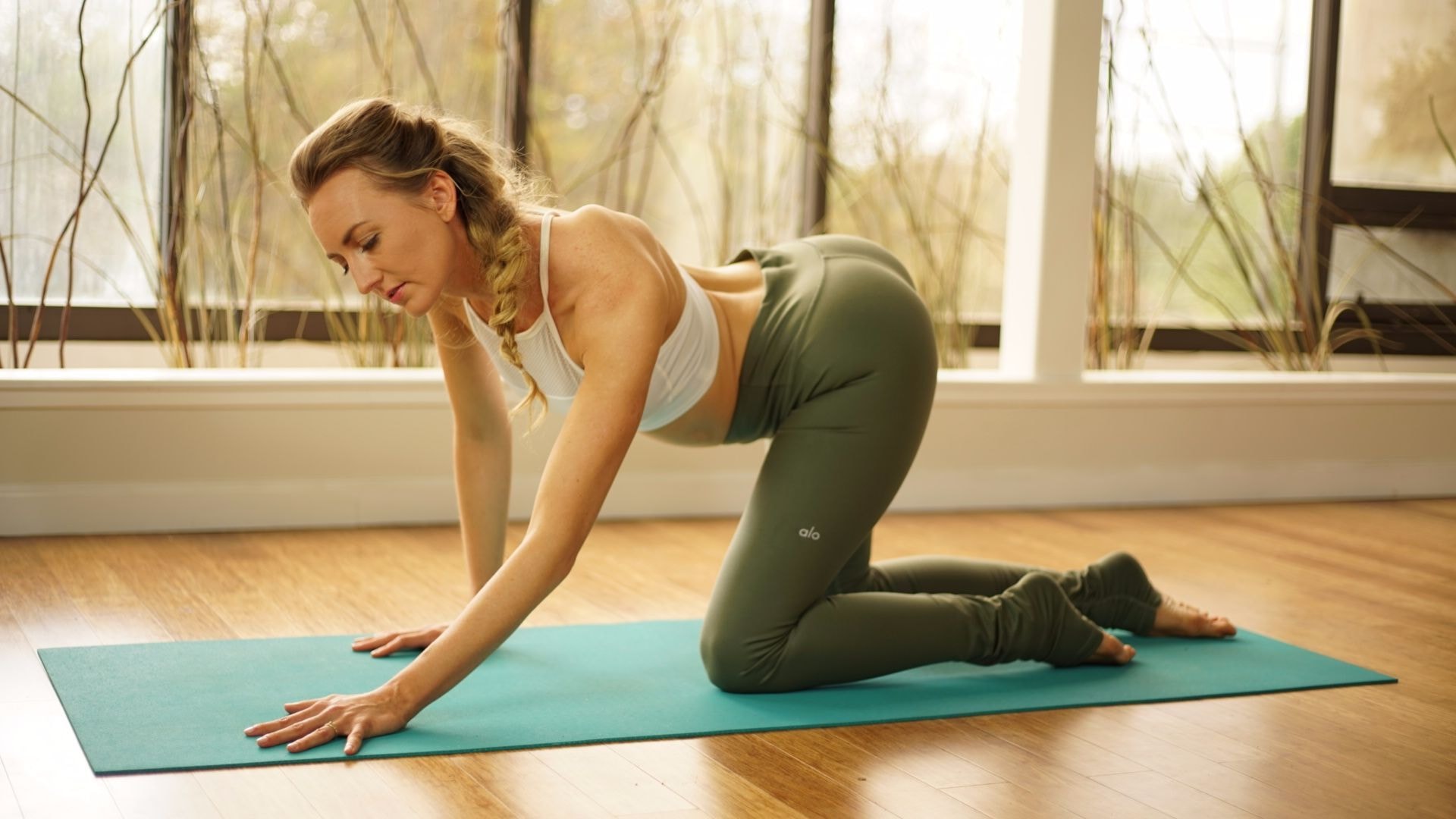
During the practice, you typically begin by finding a comfortable position, either sitting or lying down. As you close your eyes, you focus on each muscle group, starting from your toes and working your way up to your head, moving to the next muscle group, then the next muscle group.
For each area, you intentionally tense the muscle group for a few seconds before releasing them, allowing the sensation of relaxation to wash over you.
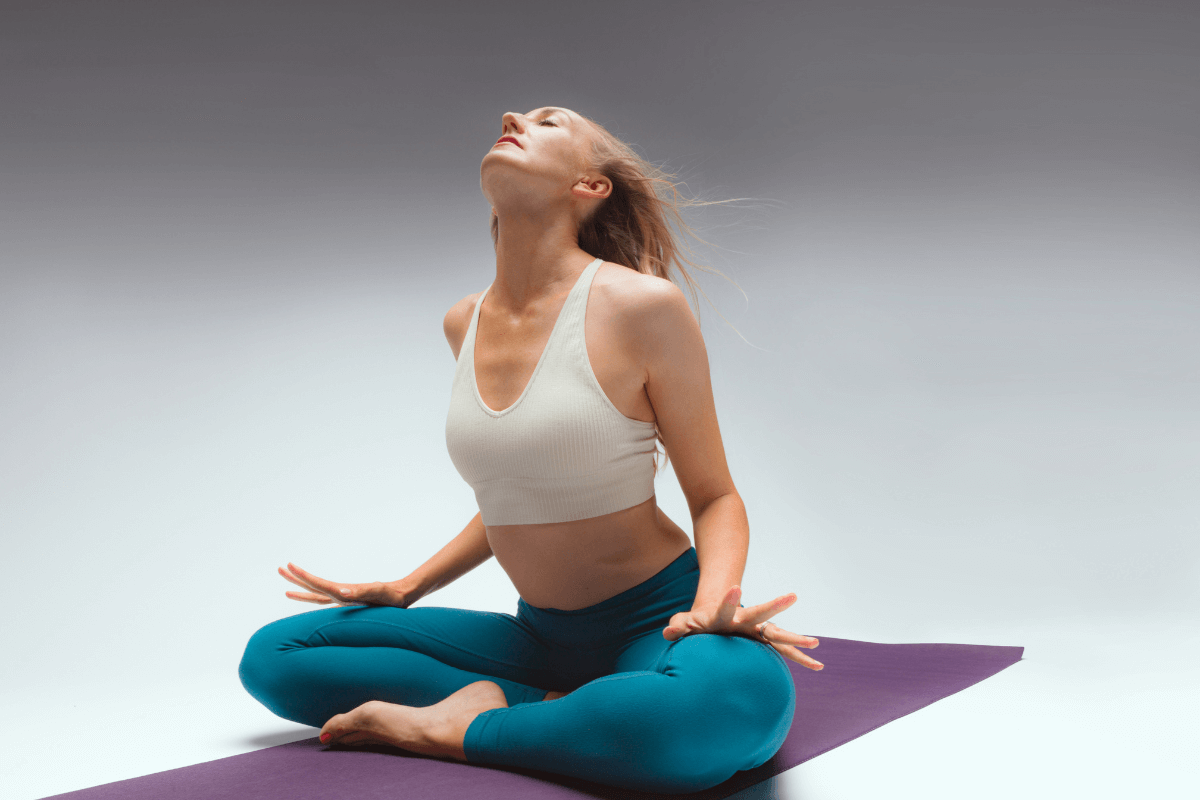
This practice not only helps to alleviate physical tension but also helps relieve stress and promotes mental clarity and emotional balance. By cultivating awareness of your body’s sensations and creating relaxed muscles, you learn to recognize stress patterns and develop effective coping strategies for stress management, entering a state of mental calmness.
Benefits Of Progressive Relaxation Technique
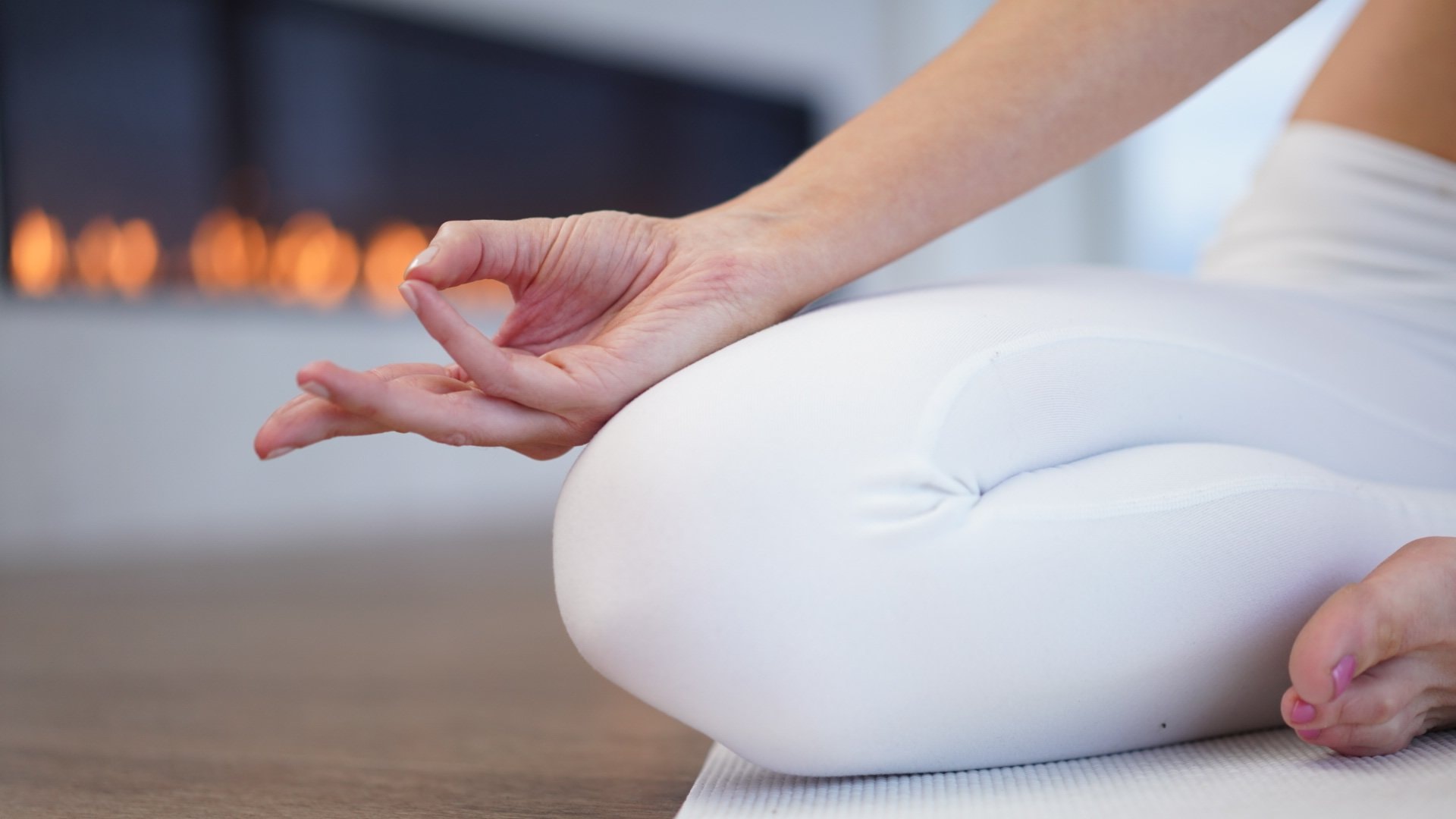
Progressive muscle relaxation offers numerous benefits outside of just physical relaxation. This relaxation technique is known to reduce stress, one muscle group at a time.
Here are some key advantages:
- Improved Sleep Quality: By promoting relaxation and reducing tension, this practice can help you fall asleep faster and enjoy deeper, more restorative sleep. When you’re able to fully relax, you can reduce symptoms of insomnia and have a positive effect on your sleep.
- Reduced Anxiety and Stress: Regular practice can lower stress levels and alleviate feelings of anxiety, allowing for a calmer mind and body. These benefits can help with depression too.
- Better Mind Body Connection: Progressive relaxation fosters awareness of bodily sensations, helping you develop a greater connection to your physical self and a deeper sense of calm.
- Increased Focus and Clarity: By calming the mind, this technique can improve concentration and mental clarity, making it easier to tackle daily tasks.
- Pain Management: The practice can help alleviate chronic pain by promoting muscle relaxation and reducing tension in the body, especially in the neck, chest, shoulders, stomach, and buttocks. Deep relaxation is a great way to release muscle tension one muscle group at a time. When you’re physically relaxed and taking deep breaths, you’re reducing stress and pain levels.
- Emotional Regulation: Progressive relaxation encourages emotional awareness, helping you process and manage your feelings more effectively. This is especially helpful with cancer patients and guided imagery techniques can enhance effectiveness too.
- Better Overall Health: Integrating this practice into your daily routine can lead to a general sense of peace and well-being, contributing to a healthier lifestyle. You’ll feel more relaxed, calm, and at east, enjoying a better quality of life.
Awaken Your Feminine Energy with my Somatic Self Healing Masterclass (usually $67) FREE👇
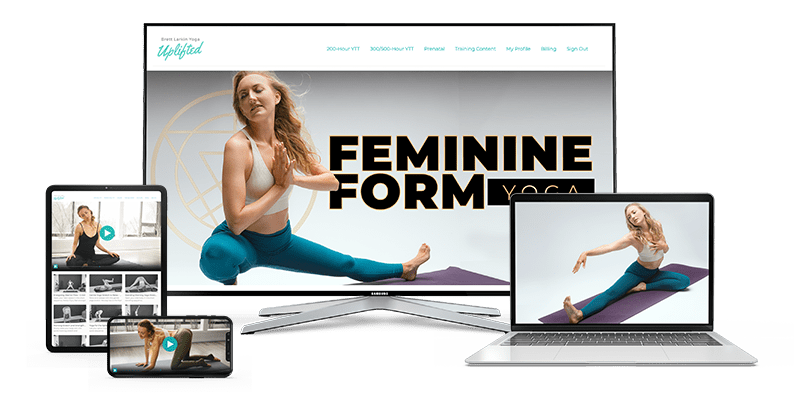
FREE Feminine Form Embodied Yoga Masterclass (usually $67) Unleashing Pleasure + Intuitive Movement on the Mat

How To Practice Progressive Muscle Relaxation

To practice progressive relaxation, find a quiet and comfortable space where you won’t be disturbed. Physical relaxation is only possible when you feel comfortable and safe.
Begin by getting into a comfortable position, either lying down or sitting with your back straight. If you want to enter a state of deep relaxation, be sure to make yourself as comfortable as possible, with blankets, pillows, and any other props. This is about achieving mental calmness, and relaxation techniques work best when your body is safe to relax.
Set an intention
Like in many integrative hypnotherapy sessions and even a yoga class, you can start by setting an intention for your meditation. Maybe you want to reduce symptoms of stress. Or you might want to fall asleep. Maybe you want to use guided imagery to release your muscles and anxiety. Maybe you’re battling with insomnia and want support in releasing tensed muscles.
Wherever you’re at, you can improve the quality of your meditation by taking the time to remember the benefits and state what you intend for this progressive muscle relaxation.
Focus Breathing Deeply
Start by bringing your awareness to your breath. Inhale deeply, filling your lungs with air, and exhale slowly. Take a few deep breaths, inhaling through your nose and exhaling through your mouth, allowing yourself to settle into the moment.
As you breathe, notice the sensations in your body and allow any tension to begin to melt away.
With each deep breath, feel more and more physical relaxation in each of your muscle groups. Allow this relaxation technique of progressive muscle relaxation to wash stress away from your body and deepen your breathing so you feel relaxed and at ease. Every breath you take can enhance your releasing of muscle groups.
Tense and Relax Each Muscle Group
Once you’re breathing is relaxed, you can start the cycles of tensing and releasing.
There is no specific order to follow, and sometimes, you might want to do a combination, like your feet and hands together. Or your shoulders and your buttocks. Don’t worry about a specific order, but I generally prefer to do this exercise by working from the bottom up.
Progress through the body
Begin with your feet. Inhale deeply and tense the muscles in your feet for a few seconds.
Then, exhale and release the tension, noticing the difference between tension and relaxation.
Gradually move up your body, working through your calves, thighs, abdomen, chest, arms, shoulders, neck, and face, tensing and relaxing each muscle group.
Focus your breathing on the muscles you want to relax. Feel the stress melting away. Use your breathing to enhance the tension, then the relaxing.
Visualize Relaxation
As you progress through each muscle group, visualize warmth and relaxation flowing through your body.
Imagine the tension leaving your muscles and being replaced by a sense of heaviness and calmness.
You can use guided imagery, like picturing your body filling with light as you move up.
Or seeing the tension melting away in a pool of golden lava. The guided imagery is of your choosing and whatever will help you ease tension and anxiety the most.
Maintain Awareness
Through your breathing, you can stay present with the sensations in your body, focusing on how relaxation feels in each area. Somatic release techniques can help with progressive muscle relaxation, as you gently tense and release tension with your breathing.
The effectiveness depends on your ability to stay present in the moment.
Focus on the present
If your mind wanders, gently bring your focus back to your breath and the sensations of relaxation.
Use a combination of guided imagery and meditation to keep your focus on the tensing and relaxing of progressive muscle relaxation. This relaxation technique is simple yet profound.
Wrap-up the relaxation exercise
Once you have worked through your entire body, take a moment to enjoy the effectiveness and feeling of relaxation. This is like a treatment for your mind, body, and soul.
When you’re ready to wrap up the progressive muscle relaxation exercise, check if you feel any lingering tension or anxiety. Like any relaxation technique, this treatment has many benefits.
If you still feel tension or anxiety, do another cycle of tensing and relaxing, going through the relaxation technique again, allowing the sense of focus and calm to go through tensing and easing your chest, neck, buttocks, stomach, shoulders, knees, and feet.
Even your wrist might need a tension release, but especially your neck and chest.
Slowly bring your awareness back to your surroundings, wiggling your fingers and toes, and when you’re ready, open your eyes.
Take a few deep breaths before transitioning back to your day, carrying this sense of relaxation with you.
Progressive muscle relaxation as treatment
If you struggle with insomnia, one of the best ways to beat insomnia is by easing tension with progressive muscle relaxation treatment. You’ll feel the benefits and soon, your insomnia will lessen, if not disappear.
If you have digestive disturbances, your stomach can benefit from the relaxation technique and the dedicated time to release stress, tension, and anxiety.
Whether it’s a European Journal or an International Journal, researchers around the world agree that anxiety and stress respond to progressive muscle relaxation as a treatment.
Digestive disturbances can ease with progressive muscle relaxation and other relaxation techniques.
Try This Guided Progressive Muscle Relaxation (WITH AUDIO)
If you’re ready to try a guided progressive muscle relaxation, then I’ve got something for you.
This guided audio meditation is an excellent starting point for progressive muscle relaxation because it provides structured guidance and support, making it easier for you to focus on the process without feeling overwhelmed.
With my soothing voice leading you through each step, you can let go of distractions and immerse yourself in the experience of progressive muscle relaxation.
Let go of your anxiety and let yourself feel calm and soothed.
The audio offers a calming atmosphere, allowing you to fully engage with your body and breath, which is especially beneficial if you’re new to the practice.
By following along, you can effectively learn how to relax each muscle group systematically, fostering a deeper connection with your body and enhancing your ability to unwind. It’s time to reduce your anxiety and step into a world of relaxation.
Take my feminine energy quiz to get a recommended practice for balancing YOUR feminine energy 👇
Integrating Progressive Relaxation into Your Daily Life
Finding time to unwind can feel like a luxury, yet incorporating progressive relaxation into your daily routine can be both manageable and rewarding.
I love to practice Yoga Habits – and progressive muscle relaxation is one of my favorites. They’re little habits you can practice anytime, anywhere, throughout your busy day.
By making small adjustments to your schedule and using this technique effectively, you can reduce your stress load and improve your sleep quality.
Here are some practical tips for integrating progressive relaxation into your busy life:
1. Start with Short Sessions
If you’re new to progressive relaxation, begin with just a few minutes each day. You don’t need to set aside an entire hour; even 5-10 minutes can yield significant benefits.
Choose a specific time each day that works best for you—perhaps during your morning routine, on your lunch break, or right before bed. Set a timer on your phone to remind yourself to pause and focus on relaxation.
As you become more comfortable with the practice, you can gradually increase the duration of your sessions.
2. Use Guided Meditations
For those who are unsure how to start or maintain focus during progressive relaxation, guided meditation can be incredibly helpful.
You can listen to the one I shared above while lying down comfortably in a quiet space, allowing yourself to be guided through the muscle relaxation process without the pressure of self-direction.
This can also be a great way to fit relaxation into your commute—just make sure you’re not driving while listening!
3. Incorporate Progressive Relaxation into Your Existing Routines and Rituals
Consider integrating progressive relaxation into routines you already have in place. For instance, if you enjoy practicing yoga or stretching in the evening, you can use progressive relaxation as a cool-down technique in savasana.
After your session, lie down and progressively relax each muscle group, allowing your body to absorb the benefits of your earlier movement.
Another effective strategy is to incorporate progressive relaxation before you sleep. As you settle into bed, take a few moments to practice by focusing on each muscle group. This can help signal to your body that it’s time to wind down, making it easier to drift off to sleep.
4. Use It as a Tool for Stress Management
Progressive relaxation can be an excellent tool to manage stress throughout your day. If you find yourself feeling overwhelmed during a busy workday or before a significant event, take a short break to practice.
Find a quiet space, close your eyes, and go through the relaxation process, focusing on each muscle group. This not only helps to relieve tension but also provides a mental reset, allowing you to approach tasks with a clearer mind.
5. Create a Relaxation Space
Setting up a designated relaxation space can enhance your practice. Choose a quiet corner in your home where you can comfortably lie down or sit without distractions.
Add calming elements such as soft lighting, cozy blankets, or essential oils to create an inviting atmosphere. Having a dedicated space for relaxation can help condition your mind to associate that environment with tranquility and mindfulness.
6. Make It a Family Activity
Encouraging family members to join you in practicing progressive relaxation can create a supportive environment for everyone. Set aside time each week to practice together, whether it’s in the evening before bed or during a weekend family session.
Not only does this reinforce the importance of self-care, but it also allows you to share the benefits of relaxation with your loved ones.
7. Reflect on Your Progress
Keep a journal to track your experiences with progressive relaxation. Document how you feel before and after each session, noting any changes in your stress levels, sleep quality, or overall well being.
This can help reinforce the practice as you begin to see the positive effects it has on your life.
8. Be Patient with Yourself
Lastly, it’s important to approach this practice with patience and self-compassion. Some days will be easier than others, and that’s okay.
The key is consistency—making progressive relaxation a regular part of your routine will help you reap the most benefits over time.
Final Thoughts
Integrating progressive relaxation into your daily life doesn’t have to be a daunting task. By starting small and finding creative ways to incorporate the practice, you can cultivate a sense of peace and mindfulness that enriches your overall well-being. With persistence and intention, you’ll discover the transformative power of this technique in your busy lifestyle.
You can ease anxiety, depression and other psychological symptoms with progressive muscle relaxation. If you liked my guided audio, you may also like this yoga nidra script.
Next Steps
Ready to deepen your relaxation? Try my Intuitive Movement: Embodied Yoga Experience. Embrace slow, gentle movements that enhance your internal awareness and sensation.
Experience the power of being fully present, fostering compassion, and building trust in yourself.
If you want to really learn how to incorporate this technique into your life and your yoga classes, I invite you to join my Somatic Yoga Training Certification.
This comprehensive training will equip you with practical tools and insights to enhance your practice and effectively guide others on their somatic yoga journey.
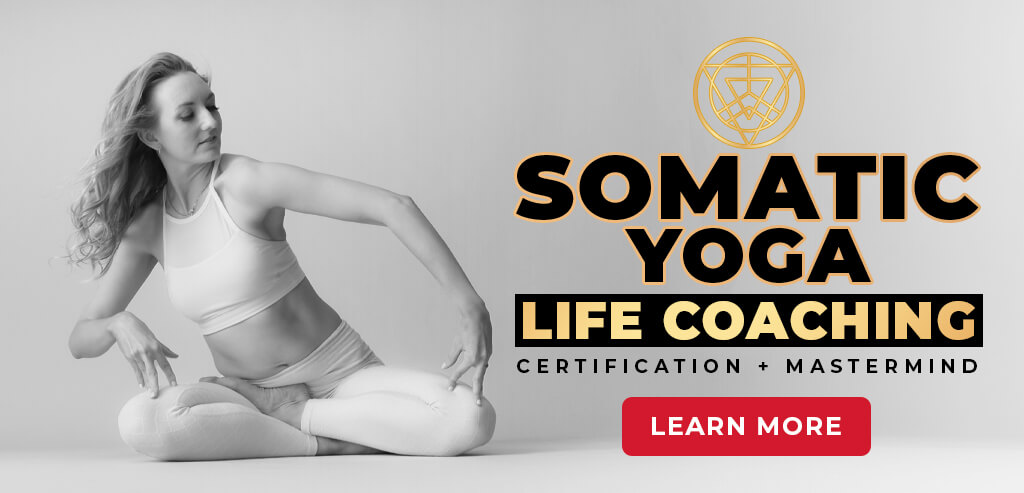
FREE Embodied Yoga Workshop (usually $67) Somatic Techniques & Cord Cutting Ritual
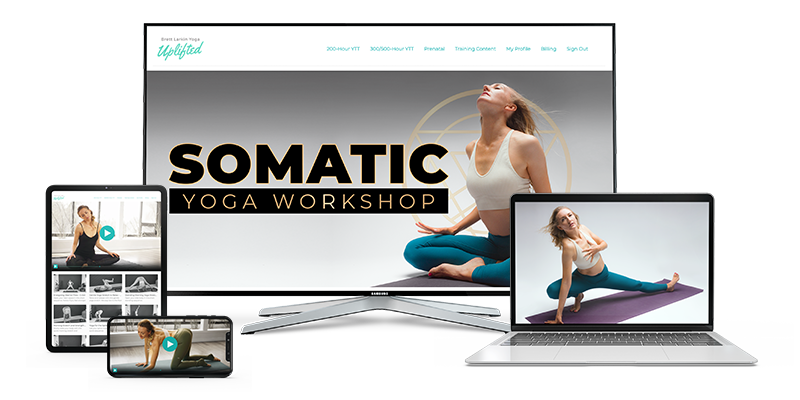
YOU MIGHT ALSO LIKE
- How to Teach Somatic Yoga: A Practical Guide for Instructors
- The Best Somatic Exercises for Grief: Find Healing Through Movement
- The Best Somatic Exercises for Anger Management and Emotional Release
- How to Teach Somatic Yoga to Beginners
- Best Somatic Yoga Poses for Emotional Release and Healing
- The Rich History of Somatic Yoga: From Origins to Modern Practices
- Somatic Yoga for Stress: Effective Techniques to Find Calm and Relief
- The Perfect Yoga Practice For Your Menstrual Cycle Energy Levels
- Enhancing Your Practice: The Benefits of Yoga and Nature Connection
- Gentle Somatic Yoga for Back Pain: Relief and Prevention Techniques
- How Somatic Yoga for Anxiety Can Help You Find Calm and Balance
- Somatic Stress Release Techniques for Emotional Balance
- Progressive Muscle Relaxation Meets Yoga for Deep Sleep
- 5 Somatic Hip Exercises For Beginners
- How To Relieve Myofascial Pain with Yoga: Heal and Prevent Muscle Tension









